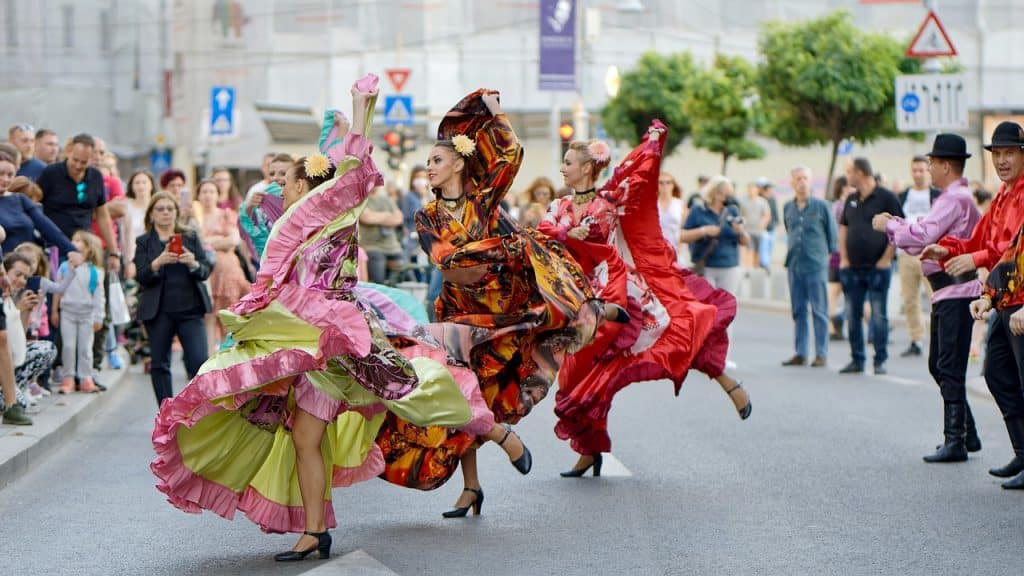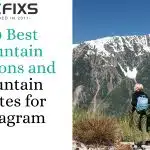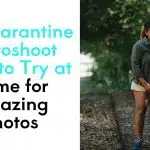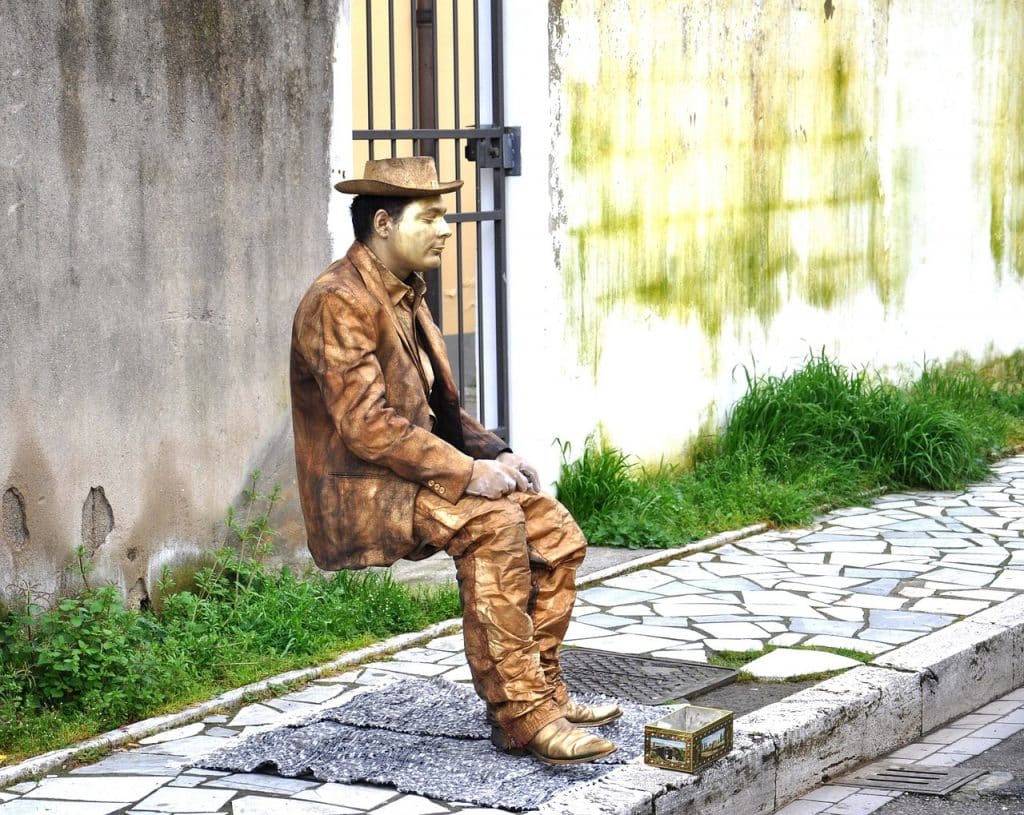Estimated reading time: 6 minutes
Or, at the very least, a focal length that is longer than conventional wisdom suggests. I’m always hearing that “street photography” is best done with a prime lens in the 35mm to 50mm range, and I understand the benefits of this range for reasons I’ll explain later. However, Alpha Whiskey is forced to run the gauntlet of the convention. So, the night before my date, I decided to kill an hour in town shooting with a telephoto zoom and mostly at maximum focal length (210mm: 420mm equivalent field of view).

‘So-called street photography,’ because it has a lot of different definitions, but it usually revolves around observing random incidents or encounters in public places, with or without people. As I’ve previously stated, much of what is referred to as street photography on the internet appears to be a collection of random shots of nothing in particular, regardless of its artistic merit. Call me picky, but I prefer images with a clear subject and I try to reveal something rather than just make a statement. These images, admittedly, may have fallen short of that goal.
Now, the 35-50mm range is understandably the most popular, as it allows for the capture of both the subject and its surroundings. That range is large enough to show a scene or person while also providing plenty of contexts. Some argue that it is more faithful to our observations because it fits the human eye’s field of view. Furthermore, prime lenses in this range are typically fast, with the wide aperture allowing for greater separation of one’s subject from its background if needed while also allowing in more light to keep the ISO low.
They are usually sharper than zoom lenses, and the fixed focal length forces the photographer to focus more on composition and framing rather than zooming in and out. They make you more spatially aware and force you to get into better shooting positions. Primes are small, light, and nearly weightless around your neck, allowing you to make images without drawing attention to yourself or your subject. I’m sure you’ve already heard all of this.

A wider angle will help you capture more of a scene, highlighting the location or possibly interesting architectural geometry. The following two images were captured at 12mm using the Olympus 12-40mm F/2.8 (24mm equivalent FoV).
Apart from encouraging laziness in composition, the drawback of telephoto or zoom lenses is that they provide the comfort of distance, allowing you to avoid engaging with your subject. Of course, this can change (read: lose) your relationship with your subject or scene, and the viewer may become less interested in it as a result. This distance may also make the photography more voyeuristic, allowing for easier capture of unsuspecting people.

I understand the criticisms of telephoto lenses and believe me when I say that I would not choose to carry a heavier lens around town. I go to the gym frequently enough that carrying weight is not an issue for me, but if I had the choice, I would prefer to shoot with a lighter load. I just want my spine to maintain the shape and length that it was designed to have. Despite this, the Olympus 40-150mm F/2.8 is still significantly smaller and lighter than its DSLR counterpart. (I used the tiny MC-14 teleconverter on the 40-150mm for the majority of the images in this article.)
However, this does not rule out the possibility of longer focal lengths. I’d argue that all street photography is voyeuristic to some extent because you’re peering into people’s lives without their permission. It’s largely irrelevant whether you open the window from close or far. Longer focal lengths compress the subject against its background, which can help isolate it within the frame.

A longer focal length also has a shallower depth of field than a shorter focal length at any given aperture, which can help with subject separation and bokeh.
Yes, the telephoto is closer to the subject and has the potential for greater intimacy. You may find yourself photographing more portraits than environments, and those portraits are easier to capture in a more authentically random manner from a greater distance.
It may also be easier to photograph with a telephoto lens from within the throngs of pedestrians. When you combine it with a flip-out touchscreen, there’s no excuse for missing the shot.
If you’re photographing buildings or locations, the telephoto lens will allow you to focus on more details and possibly abstract shapes. Although this isn’t strictly street photography, it is an urban observation nonetheless.
What do I mean when I say “longer” or “telephoto” focal length? Of course, it’s debatable, but anything longer than 90mm, in my opinion, qualifies. I shot almost exclusively with the Olympus 45mm F/1.8, which had a 90mm equivalent field of view when I joined Nasim on his London Photowalk a few years ago. Despite its plastic construction and toy-like appearance, that lens is extremely light and small, and it produces pleasingly sharp images.

I normally draw the line at my Olympus 60mm (120mm equivalent FOV), but only because that lens is also very small and part of my light carry kit; on this occasion, I purposefully used the telephoto zoom to try to debunk the conventions. I may not have succeeded, but it was a lot of fun trying.
Even if street photography isn’t your thing, and it certainly isn’t mine, I believe the takeaway message is that you shouldn’t limit yourself to shooting with focal lengths that are considered standard for your chosen subject. Of course, conventions are in place for a reason, but be willing to step outside of the box and give your creativity a boost.
Note: If you want to make some adjustments to the photo just let me know. I can do it for you at a very low cost. You can hire me to edit your photo.
LATEST POST
- What is Midjourney
 Discover the capabilities of Midjourney AI, learn how to effectively utilize the platform, and explore the advantages and disadvantages of the Midjourney AI image generator across its different pricing options.
Discover the capabilities of Midjourney AI, learn how to effectively utilize the platform, and explore the advantages and disadvantages of the Midjourney AI image generator across its different pricing options. - Brand identity elements
 In the vast marketing universe, imagery is pivotal in establishing and nurturing a brand’s identity. A brand’s visual choices are not merely aesthetic decisions but strategic moves that can significantly influence perception and performance. This Picfixs article explores the intricacies of selecting imagery that complements and enhances a brand’s essence, ensuring it resonates with the… Read more: Brand identity elements
In the vast marketing universe, imagery is pivotal in establishing and nurturing a brand’s identity. A brand’s visual choices are not merely aesthetic decisions but strategic moves that can significantly influence perception and performance. This Picfixs article explores the intricacies of selecting imagery that complements and enhances a brand’s essence, ensuring it resonates with the… Read more: Brand identity elements - 100 Best Mountain Captions and Mountain Quotes for Instagram
 Ready to scale new social media heights? Look no further than this treasure trove of 100 exhilarating captions and quotes, handpicked for your Instagram mountain posts!
Ready to scale new social media heights? Look no further than this treasure trove of 100 exhilarating captions and quotes, handpicked for your Instagram mountain posts! - Symmetry in Photography: A Creative Approach with Examples
 Delve into the enchanting realm of symmetry in photography as we showcase mesmerizing examples on our website. Experience the allure of perfectly mirrored images!
Delve into the enchanting realm of symmetry in photography as we showcase mesmerizing examples on our website. Experience the allure of perfectly mirrored images! - 11 Quarantine Photoshoot Ideas to Try at Home for Amazing Photos
 Looking for unique photoshoot ideas during quarantine? Explore the 11 creative suggestions that will help you capture unforgettable moments at home.
Looking for unique photoshoot ideas during quarantine? Explore the 11 creative suggestions that will help you capture unforgettable moments at home.
RELATED LINK


